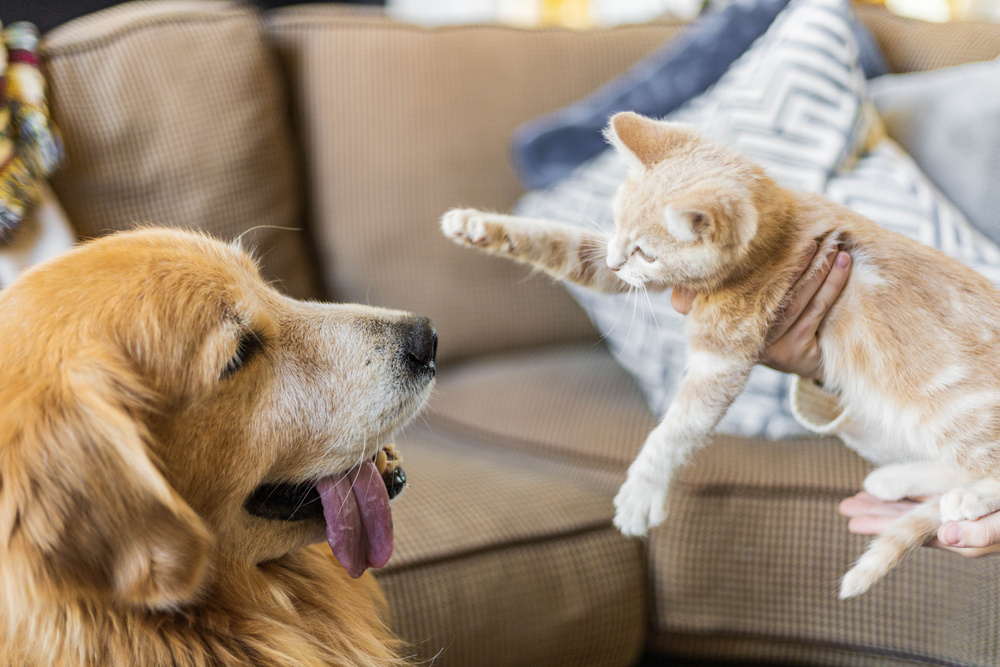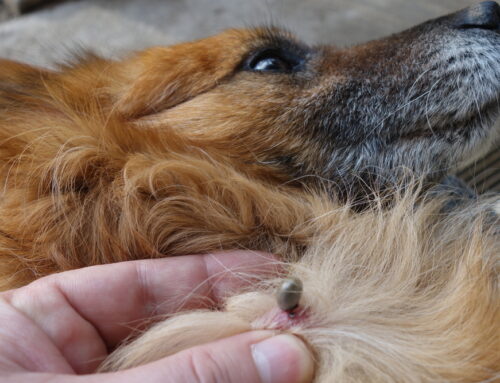Cats are sensitive creatures who do not always handle new experiences well. They need sufficient time to adjust to unfamiliar territory. The south Austin veterinarians at Oliver Animal Hospital want to provide tips to help your adopted cat adapt peacefully to their new home.
#1: Prepare your home before your new cat’s arrival
Choose a small room in your home where your new cat can stay for the first few days or weeks as they acclimate to their new surroundings. Provide a litter box with one to two inches of unscented, clumping cat litter. In an area away from the litter box, provide clean, fresh water and food. Offer the same food they were receiving previously, and make any transition to a new diet slowly over one to two weeks, to avoid an upset stomach. Provide a cat hide-away, which can be a fancy cat condo or a cardboard box that has two “doors.” Cats require quiet time in a place where they feel secure, and two escape routes helps them not feel trapped. Also, since cats need to scratch to remove worn nails and to mark their territory, provide an acceptable scratching post to prevent them from scratching your furniture.
#2: Keep your new cat safe in a carrier
When transporting your new pet home, never allow them to roam free in your vehicle. A car ride can be traumatic for a cat, especially one who is used to a cage. Your new pet will be happier and less stressed if left inside a carrier. When you arrive home, take them to their safe room and open the carrier, allowing them to venture out when they feel comfortable.
#3: Allow your new cat time to adjust
Your adopted feline may need 7 to 14 days to settle down in their new environment. Do not attempt to force interaction when they are in hiding mode. Sit on the floor in your cat’s designated room and allow them to approach you. If they stay hidden, you should leave, and come back later to see if they are feeling more sociable. Initially, many cats do not show interest in food, but if your cat has not eaten by the third day, get advice from our south Austin veterinarians. Once your cat seems adjusted to their small room, you can start allowing them access to other home areas.
#4: Take your new cat to the veterinarian
Once your pet is settled, our team at Oliver Animal Hospital would like to meet them to ensure they are healthy, and on an appropriate vaccine and parasite prevention program. If you have your new cat’s previous medical records, bring them along so we can include them in their new file.
#5: Gradually introduce your new cat to your resident cat
Allow your cats to sniff each other under the safe room door as an initial greeting. After a few days, switch out each cat’s bedding to allow them to further acclimate to each other’s smell. As long as neither cat shows any aggression signs, arrange a restricted meeting outside the new cat’s safe room. Put each cat in their carrier, and allow them to see and smell each other while they stay inside. Repeat this process a few times a day until the cats seem comfortable in each other’s presence. The next step is to leave the safe room door open, to let the new cat explore outside their safe room, and the resident cat to visit if they wish. Keep the initial visits short and under supervision, and offer a high-value treat to both cats that they receive only in each other’s presence.
#6: Ensure your cats do not have to share
Each cat should have their own food and water bowls, scratching post, hiding hole, toys, and litter box. The rule is one litter box for each cat, and one extra, to help prevent litter box mishaps. Cats also love viewing their environment from a higher vantage point. Provide as many high perches as possible to increase your home territory, and provide the same amount of vigorous playtime for each pet, to facilitate a peaceful coexistence and prevent jealousy.
#7: Cautiously introduce your new cat to your dog

Once your new cat has adapted to their safe room, confine your dog to another room, and allow your cat to explore your home. Your dog and your new cat should first meet indoors, with your dog on a tight leash. Have a generous treat supply available in your pocket to reward your dog for good behavior. Do not allow your dog to chase your cat. Your dog may only be curious or want to play, but your cat may interpret this behavior as aggression and become fearful. Do not leave your dog and cat alone until they have fully accepted each other and pose no threat.
Adopting a new cat is an exciting time, and these tips should help ensure your new pet’s arrival is a success. Once your cat settles in, contact our team at Oliver Animal Hospital to schedule an appointment for a meet-and-greet and a wellness visit.







Leave A Comment